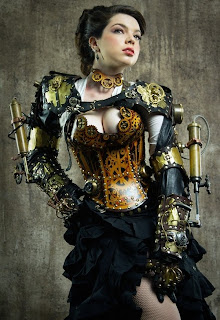Okay we gaan iets leuks doen. Maar voor we kunnen beginnen heb ik geld nodig. Ik wil dat jullie me geld geven. Het hoeft niet zo veel te zijn. Wat je kan missen.
Okay we are going to do something fun. But before we can begin I need money. I want you guys to give me money. It doesn't have to be much. Anything you can miss.
Jij?
You?
Jij misschien?
You maybe?
Ah, kijk 20 cent.
Ah, look 20 cents.
Hahaha.
Hahaha.
Ik schrijf op het bord:
I write on the bord:
20 cent - Abdul
20 cents - Abdul
Iemand anders?
Anybody else?
Nu is er wat rumoer in de klas.
Now there is some clamour in the classroom.
Iemand legt een euro in. Verder legt niemand wat in.
Somebody puts in one euro. No one else makes a commitment.
Ik zelf leg veertig euro in. Zeg ik.
I myself put in forty euro's. I say.
Ik schrijf op het bord:
I write on the bord:
Karim - 1 euro
Karim - 1 eruo
Wouter - 40 euro.
Wouter - 40 euro.
Okay, nu gaan we beginnen. Ik heb een idee. Het is een glazen doos. In de doos zit een trein. We maken een landschap in het klein. Met huisjes en lichtjes. We maken het zo dat je geld in een gleuf moet doen, en dan kan je het bekijken.
Okay, now we can begin. I have an idea. It is a glass box. In the box you'll find a train. We make a landscape, only small. With houses en lights. We make it so, that you have to put money in a hole, en then you can see it.
Ik maak een tekening op het bord, ter verduidelijking. Ze snappen het.
I make a drawing on the bord, for clarity. They understand.
Nu zijn we ondernemers. Zeg ik. Maar we kunnen er natuurlijk helemaal niks van. We zijn beginners. Ik ga morgen naar de winkel om spulletjes te kopen waarmee we hopelijk iets moois kunnen maken.
Now we are entrepreneurs. I say. But we are no good at all of course. We are beginners. Tomorrow I will go to the store to buy stuff with which we can hopefully make something cool.
De volgende dag ben ik terug. Ik heb led lampjes gekocht. Piepschuim en iets wat op gras lijkt. Ik heb een bouwpakket van een huisje en een kartonnen doos.
The next day I'm back. I have bought led lamps. Styrofoam and something that resembles grass. I have a construction box of a little house and a cardboard box.
We make the toy. Er was geen geld om hem automatisch geld te laten aannemen. In plaats daarvan moet er iemand bij staan. Als hij het geld ontvangt laat hij je kijken.
We make the toy. There was no money to make it take money automatically. In stead somebody has to stand next to it. Whenever he receives money he will let you look.
We verdienen 40 cent door twee kleine kinderen te laten kijken.
We make 40 cents by getting two small children to watch.
Ik schrijf op het bord:
I write on the bord:
investering: 41,20
opbrengsten: 40 cent.
investment: 41,20
return (yield): 40 cents.
Ik had jullie al gezegd dat we er niks van konden. Zeg ik. Het gaat erom dat we er iets van leren, daarom zijn we hier. Als we vaak van dit soort dingen doen, worden we er steeds beter in, totdat we er meesters in zijn, en dan kunnen we geld gaan verdienen.
I had already said you guys that we stink. I say. The important thing is that we learn something from it, that's why we're here. If we do stuff like this a lot, we will get better, until we are masters, and then we can make money.
Wat zullen we nou gaan doen?
What shall we do next?




.jpg)
.jpg)
